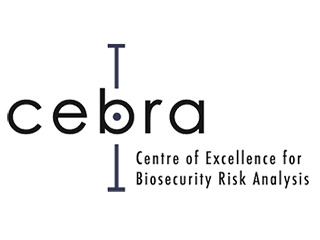Educational Material
2. Discovering Species Distribution with BCCVL
An overview of SDM and each of the algorithms used
Welcome to the first module of this species distribution modelling course. In this module, we will give you an introduction to what species distribution modelling is and the steps involved in calibrating and mapping these models.
In the first module of this species distribution modelling course, we had a quick look at what species distribution modelling is. In this second module, I am going to explain the theory behind these models in a bit more detail.
In the first two modules we gained a better understanding of how you can use species distribution models and some of the ecological theory underpinning these models. In this module, we will have a closer look at the different types of data that you need to run a species distribution model, where to get this data from, things to be aware of and some standard good practices when dealing with data.
Now we know more about the theoretical background of species distribution models, and the different types of data that you need to built a model, it is time to design your model. What I mean with that is that you need to think about the question that you are trying to answer, and what kind of data and algorithm are best to find that answer. In this module we explore the main components of an SDM and the things you need to think about.
In the previous modules of this online open course in species distribution modelling, we have learnt a great deal about the kind of data that you need to build a model, and we had a quick look at the different kinds of models that you can use. So, now it is time to explain the algorithms in more detail. In this module we will look at models that only use presence data: geographic and profile models, and Maxent, a popular machine learning model.
In the previous module, we looked at models for which you only need to provide occurrence data to predict the distribution of a species. In this module, we will focus on statistical regression models, which use both presence and absence data.
In the previous two modules we have looked at geographic, profile and statistical regression models to predict species distributions. In this module, we will look at another group of species distribution models: machine learning models.
Now we have looked at the different models you can use to predict species distributions, it is important to understand how to interpret the output of a model. A vital step in modelling is assessing the accuracy of the model prediction, commonly called ‘validation’ or ‘evaluation’.
Welcome to module 9 of the online open course about species distribution modelling. In the first 8 modules of this course, we have learnt about the different aspects of designing a species distribution model: the data that you need, the different algorithms that you can use to predict species distributions and how to evaluate the outcomes of your model. With all that knowledge in our back pocket, we can now look at an important application of species distribution models: the prediction of species distribution under future climate change projections.
Welcome to the last module of this Online Open Course in Species Distribution Modelling. In this module, I am going to show 4 different case studies that highlight the variety of research questions and applications that can be addressed with species distribution models. And I will show you how you can run these models in the BCCVL, the Biodiversity and Climate Change Virtual Laboratory, an online tool that let’s you run species distribution models in a few easy steps.
Our partners











- EcoCommons Australia partners with the Australian Research Data Commons (ARDC), which is supported by funding from the National Collaborative Research Infrastructure Strategy (NCRIS) https://doi.org/10.47486/PL108.

